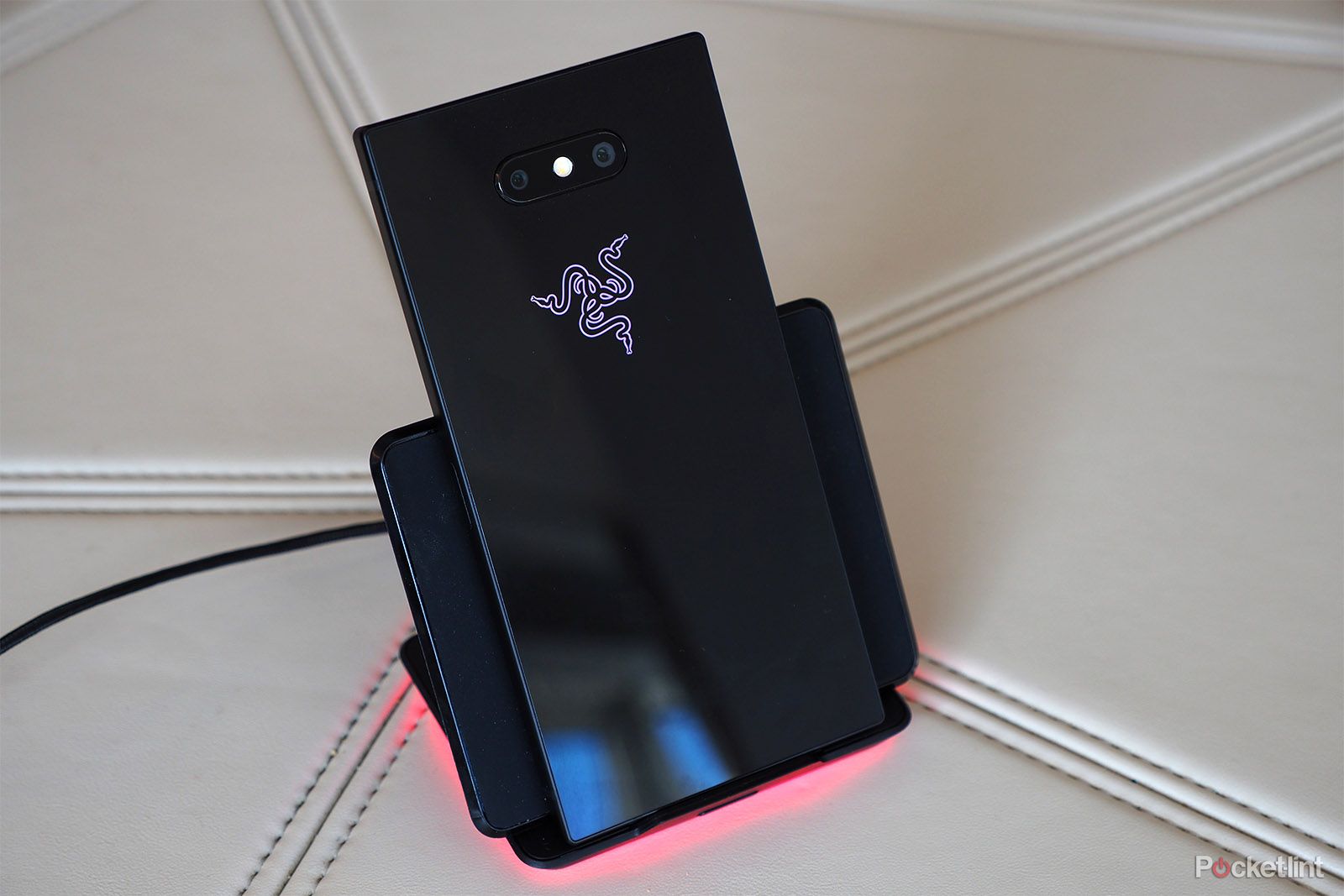The original gaming phone from Razer is back for round two. Yes, it's the creatively named Razer Phone 2. But what does the sequel bring to the gaming phone party?
Design
- Razer Phone: Embossed laser-transfer Razer logo to rear / Razer Phone 2: LED-backlit Razer logo, 16.8 million colours (Razer Chroma)
- Razer Phone: Anodised soft-touch metal body / Razer Phone 2: Glass back with aluminium frame
- Razer Phone: 158.5 x 77.7 x 8 mm / Razer Phone 2: 158.5 x 78.99 x 8.5mm
- Razer Phone 2: IP67 water resistant
First up, the Razer Phone 2 doesn't have a full metal jacket like its predecessor, instead it's a glass-backed design (with aluminium frame support for rigidity).
This is made even more interesting by the introduction of an LED-backlit Razer logo to the rear. It acts as the phone's only notification light, although it can be deactivated. Or, if you're feeling more fun, then the Razer Chroma app (pre-installed) allows you to utilise the LED's 16.8 million colour spectrum to have the logo breathe (slow fade on/off), cycle through the full spectrum of colours, or remain on at all times in your colour of choice.
The new phone also has an enhanced vibration engine that's more powerful than the original.
In terms of size and shape, however, the Razer Phone 2 is almost identical to its predecessor. That means, once more, that it's something of a brickphone, albeit with slightly softer and more rounded edges than the original device.
New for the latest device is IP67 dust- and water-resistance, which the original lacked. Come rain or shine, it's gaming time.
Screen
- Both devices: 5.7-inch, 2560 x 1440 resolution, 16:9 aspect ratio LCD panel
- Both devices: 120Hz panel for super-fast refresh rate and response time
- Razer Phone 2: 645 nits (50% brighter than original), 10-bit colour
- Razer Phone: Gorilla Glass 3 / Razer Phone 2: Gorilla Glass 5
- Both devices: Netflix HDR and Dolby Digital 5.1 capable
- Both devices: Razer UltraMotion frame-rate sync
At more-or-less the same size, the Razer Phone 2 adopts the same screen size as the original too. That means 5.7-inch, over a 16:9 aspect ratio - best for gaming aspect, Razer says - with the same QHD resolution and 120Hz panel refresh rate.
Different this time, however, is increased brightness: it's said to be 50 per cent brighter.
A quick word on 120Hz: this double-fast refresh (literally, the refresh rate is double that of most other phones on the market) means a faster response time (8ms, not 16ms people!) and higher frame-rate gaming with compatible games. There aren't huge numbers of 120fps games, however, but at last count it was upwards of 50, so there's definite value in it.
Spec
- Razer Phone: Qualcomm Snapdragon 835 platform, 8GB RAM / Razer Phone 2: Qualcomm Snapdragon 845 platform, 8GB RAM
- Razer Phone: Heat pipe and thermal layers for heat sync / Razer Phone 2: New Vapor Chamber Cooling system
- Both devices: 64GB storage, microSD card slot expansion
- Both devices: 4000mAh battery, USB-C quick charge
- Razer Phone 2: Wireless charging (Qi fast-charging)
- Razer Phone 2: Wireless charging dock, sold separately
The Razer Phone 2's innards get a bump too, by updating to the latest and greatest Qualcomm chipset, along with the standard 8GB RAM. That should see an uplift in performance.
Cooling is handled differently too, with a new vapour chamber cooling system (the same kind of tech that Nvidia uses in the GTX 1080 graphics card) for greater efficiency.
The Razer Phone 2 also goes one-up with connectivity, offering Gigabit LTE (1.2Gbps) at CAT 18, which is theoretically 20 per cent faster than the original (if you're in the right part of the world on a compatible network anyway).
Thanks to that glass rear the Razer Phone 2 is also Qi wireless charging compatible, although you'll need to buy a charging mat separately (or the light-up Razer dock). Otherwise it's quick-charge via USB-C, just as it was in the original Razer phone.
Cameras
- Razer Phone: Dual 12MP rear cameras (wide-angle f/1.75, standard f/2.6)
- Razer Phone 2: Adds optical image stabilisation (OIS) for wide-angle
- Razer Phone: 4K 30p / Razer Phone 2: 4K 60p (1080p120 / front-facing camera 1080p60)
In terms of cameras, despite the Razer Phone 2 moving to the centre rather than maintaining the in-the-way edge position of the original, it's a similar story. The resolution and optics are the same, although the newer device adds optical image stabilisation.
Software has advanced further too, with the introduction of 'face beauty', slower slow-motion, panorama, and portrait (with the software-derived bokeh).
The bigger take-away for many will be the update to video frame-rate: the Razer Phone 2 doubles down over the original, offering 2160p at 60fps, while its front-facing 8MP camera can now cater for 1080p at 60fps too (but not 4K - probably not a big issue for streamers and vloggers).
Conclusion
- Price and release date: TBC (mid-to-late October estimate)
There's no price for the new Razer Phone, but we would expect it to be a little pricier than the original given the glass rear and addition of wireless charging. It'll be available before the end of October 2018.
So, back to the question: do we really need a gaming phone? Probably not. But Razer does bring some great features to the smartphone market: that 120Hz panel looks great, while the light-up Razer logo is quirky and fun indeed. Shame the phone is still a bit of a brick by design, but that might be irrelevant for its target market.

